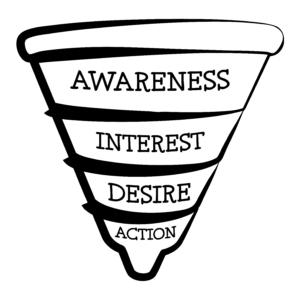
Some clients love to tell me what works when it comes to writing for B2B.
“Business to business is about rational decision making, not emotion,” the refrain goes. “The ad you’re writing needs to explain the benefits of the product, full stop. Getting creative won’t work.”
Well, those clients are both right… and wrong.
They’re right in that when companies buy things, they typically take weeks or even months to vet the options before making a decision. They won’t choose a product or service because it’s the cutest, or because it makes them feel like a badass, or feel wealthier than they actually are. Decision makers have to be convinced that the product or solution will work, because it could cost them their job if it doesn’t.
But there is definitely a time and place to get creative, even in B2B.
Here’s why: Two of the most common problems B2B companies face when it comes to marketing are:
- Their ads (the ones that logically explain the benefits of their product) don’t get as many clicks as they want.
- When their salespeople ask for meetings with potential customers, there’s no reply.
The real problem behind these situations is a lack of brand presence in the marketplace. After all, if your audience has never heard of you, they’re going to ignore your ads, and ignore the outreach from your sales team.
There’s more to B2B marketing than lead generation
While most B2B companies focus their marketing budget on lead generation, there’s a lot more to marketing.

Don’t get me wrong: lead generation tactics do matter, but they’re only part of the picture, because they only work for people who are ready to buy right now. In other words, they address people who are at the bottom of the marketing funnel.
It’s important to realize most of your potential clients aren’t ready to buy. In fact, a whitepaper by the B2B Institute and the Ehrenberg-Bass Institute shows that only a small fraction of your customers are ready to buy at any given point.
For example, most companies aren’t holding their breath, waiting for an innovative HR platform to come along. There’s a lifecycle to these investments because everything costs money (including the time investment while it gets implemented, configured, and everyone learns to use it).
If your potential client has just purchased new software and spent two weeks getting everybody up to speed, they are absolutely not ready to buy your amazing new system — even if it is better. It will be a few years until they get dissatisfied enough with the shortcomings of the system they just bought to start looking further afield.
The same thing goes for almost everything businesses buy, from tech to office furniture: it’s generally at least a couple of years until they’re ready to shell out again (or consider switching suppliers). And that’s the only time when they will click on your ad or take the meeting with your salesperson.
So the problem becomes: how are your potential customers going to remember you until they’re ready to buy?
Smart brand building
The answer is to be so memorable that years later, they still know who you are.
You need advertising that stands out, despite the constant firehose of ads we all experience every day. We’re all bombarded, and not just as consumers: our LinkedIn feeds, our work email, and the industry sites we read are all full of ads aimed at us or at the companies that employ us.
The operative word being “smart”
Good brand building isn’t just randomly memorable: it also has to bring your company’s name to mind when your prospects are in the right buying situation. They have to be able to make the connection between that entertaining or inspiring moment and what it is you do.
(A great example of why this is so important is arguably the funniest ad of all time: Reebok’s “Terry Tate: Office Linebacker”. As memorable as the ad series was, viewers often didn’t make the connection to the company.)
To be truly effective, you need a more sophisticated approach to marketing. You need to have a budget that funds top of the funnel as well as bottom of the funnel efforts. More simply, for those lead generation efforts to work one day, there has to be awareness and interest first. That only comes from brand building.
The upside of dividing your budget, however, is that good brand building will improve the success rates of your lead gen campaigns — and all your other marketing efforts — over time.
Here’s the proof
How do we know this is true? According to a survey by BCG and Google, the more mature your brand marketing, the better your marketing ROI. In fact, the top 10% brand builders earned at least 46% more return. One company found that the long-term return on marketing investment (ROMI) was about 640% over four years. (Yes, these were all B2B companies.)
Further:
- A CEB and Google study shared with MarketingWeek showed that using emotion was twice as effective in B2B advertising, especially given the tension between risk and trust in professional buying situations. “B2B customers are more than twice as likely to consider a brand that shows personal value over business value, because buyers perceive little difference in the business value that the different suppliers can offer.”
- Other, older studies corroborate the success of B2B companies that invest in their brands. A 2012 study by Forbes found that, amongst other things, “B-to-B purchasing decision makers consider the brand as a central rather than a marginal element of a supplier’s value proposition. Our survey found that decision makers say that brand is almost as important as the efforts of sales teams in encouraging them to make out a purchase order.”
The list goes on… you can find similar insights all over the web.
It’s been done before… and done well
If your company has been exclusively lead-gen focused, you may be thinking that brand building is new in B2B. It isn’t.
There are plenty of examples of B2B companies who’ve done great brand building right over the years, including Hewlett Packard, Boeing, Cisco, Adobe, Salesforce, IBM, Xerox, Slack, Jira, MailChimp, and many others.
Some of the links above take you to ads that are funny, and others to ads that take just your breath away. The quality they share is that they’re all memorable.
Maybe it’s time to give your brand budget a lot more love.
